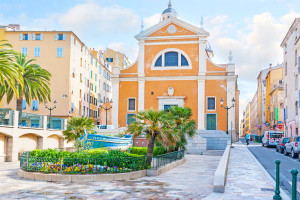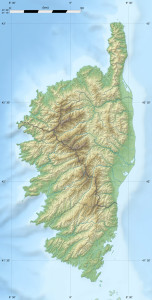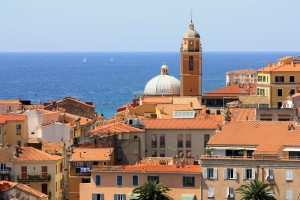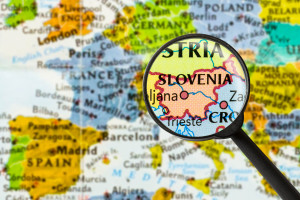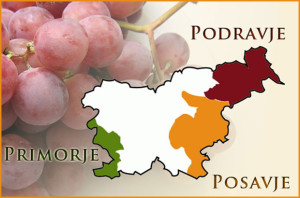The French island of Corsica is located in the Mediterranean Sea about 110 miles (170 km) from the coastline of southeast Provence. Corsica is the fourth largest island in the Mediterranean, after Sicily, Sardinia, and Cyprus. The island was originally named Kalliste by the ancient Greeks, which translates to “the most beautiful of all.”
Ajaccio, located on the west coast, is the largest city on the island as well as the capital city of Corsica. The city is home to two marinas, a wealth of beaches for swimming and scuba diving, a casino, and the Ajaccio Cathedral (Cathedral of Our Lady of the Assumption of Ajaccio). A wealth of restaurants, bars, cinemas, and other such nightlife may be found along the “main drag,” the Route des Sanguinaires. Napoléon Bonaparte, perhaps the most famous Corsican of all time, was born to a wine-making family in Ajaccio in 1769. His ancestral home, the Maison Bonaparte, is now a museum.
Corsica is often described as resembling a “miniature continent” complete with white sand beaches, seaside resorts, rugged mountain peaks, dense forests, and red granite cliffs. The island experiences three separate climate zones, delineated primarily by altitude. The coastal region (defined as below 2,000 feet/600 m) features a Mediterranean climate and a good deal of the island’s vineyards. The area between 2,000 to 5,900 feet (600 to 1,800 m) is considered a temperate mountain zone and also contains large plantings of vines, as well as most of the island’s forests. Forming a “ridge” down the center of the island, the area above 5,900 feet (1,800 m) is considered an alpine area and is sparse in vegetation and uninhabited–aside from mountain climbers and shepherds.
Corsica has been part of France since 1769. However, geographically speaking, it is closer to Tuscany than France. This Italian influence is evident in the wines of Corsica, which are just as likely to be produced from Vermentino (here known as Rolle) and Sangiovese (locally referred to as Nielluccio) as they are from grapes more typical to southern France, such as Grenache, Mourvèdre, Syrah, and Muscat.
Corsica has a long history of wine production and, like many other similar regions, has been experiencing a renewed focus on quality. At present, approximately 25% of the island’s production is AOC-level wine, with another 50% bottled under the elegantly titled departmental Il de Beauté (Isle of Beauty) IGP.
The main AOC of Corsica is the Vin de Corse AOC, which allows for white, red, and rosé wines vinified in dry, off-dry, or semi-sweet styles. White Vin de Corse AOC requires a minimum of 75% Rolle (Vermentino), while red and rosé versions are made with at least 50% (combined) Grenache, Sangiovese, and Sciaccarello (an aromatic, historically significant Tuscan variety also known as Mammolo).
Cap Corse—the mountainous peninsula extending from the northern part of the island—is home to some of Corsica’s highest-quality wines, including dry white, red, and rosé wines bottled under the title Coteaux du Cap Corse (a subregion of the Vin de Corse AOC). Muscat du Cap Corse AOC—a vin doux naturel traditionally produced at least partially from sun-dried grapes—is produced using 100% Muscat Blanc à Petits Grains grapes.
![Wine Map of Corsica by DalGobboM (Own work [http://www.gnu.org/copyleft/fdl.html]), via Wikimedia Commons](http://winewitandwisdomswe.com/wp-content/uploads/2017/01/Vignobles_corse-212x300.png)
Wine Map of Corsica by DalGobboM (Own work [http://www.gnu.org/copyleft/fdl.html]), via Wikimedia Commons
References/for further information:
- Johnson, H., & Robinson, J. (2013). The World Atlas of Wine (Seventh edition). London: Mitchell Beazely.
- Robinson, Jancis, Julia Harding and José Vouillamoz: Wine Grapes. New York, 2012: Harper Collins Publishers
- Robinson, Jancis and Julia Harding: The Oxford Companion to Wine, 4th Edition. Oxford, 2015: The Oxford University Press
- https://www.lonelyplanet.com/france/corsica
- https://www.roughguides.com/destinations/europe/france/corsica/
- http://www.visit-corsica.com/en/
- http://corsicaexperience.com/
Post authored by Jane A. Nickles, CSE, CWE – your blog administrator
Are you interested in being a guest blogger or a guest SWEbinar presenter for SWE? Click here for more information!
